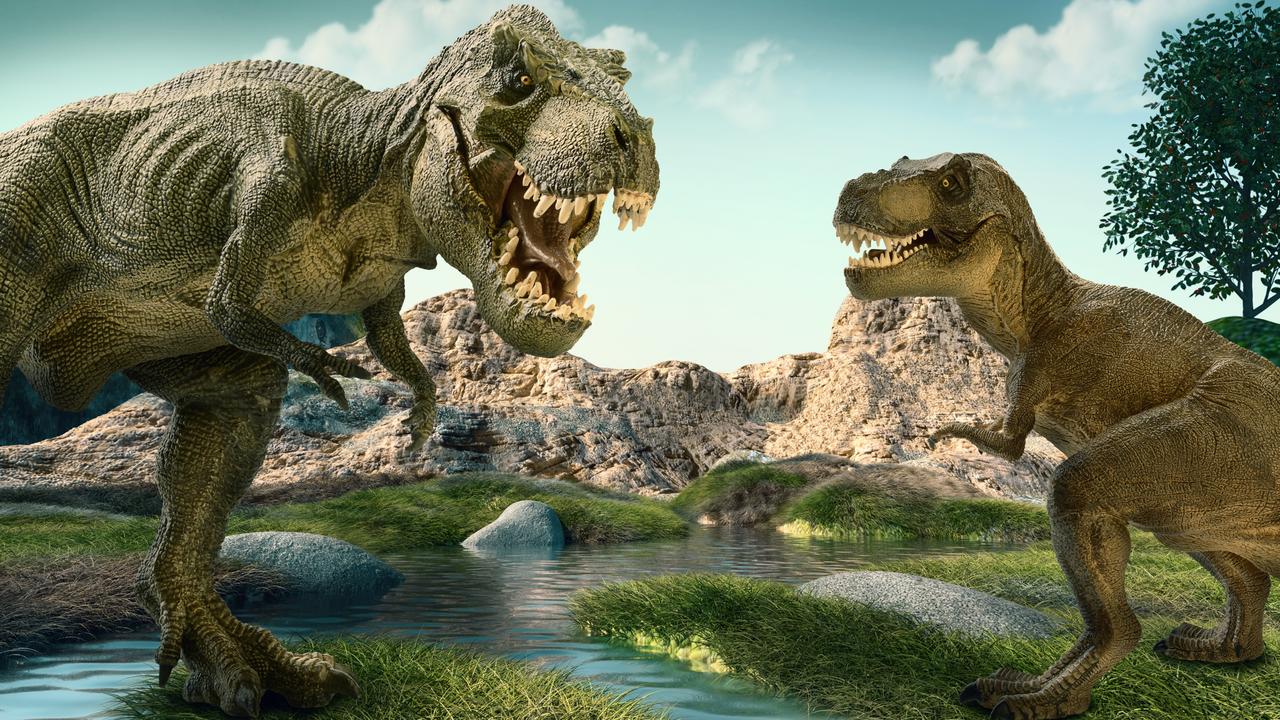T-rex sole species of mighty meat eater Tyrannosaurus, say scientists
Rejecting calls for a queen and emperor to share the Tyrannosaurus title, dinosaur experts have declared there is only one T-rex

READING LEVEL: GREEN
T-rex still reigns as the king of dinosaurs, according to scientists who have argued against a controversial* theory that the mighty meat-eater Tyrannosaurus should be recognised as three species and not just one.
Seven palaeontologists* have argued that a March study provided insufficient evidence that there were three Tyrannosaurus species based on fossils of the world’s most famous dinosaur, citing* improper statistical methods, limited comparative samples and faulty measurements.
T-rex has been the single species of the genus Tyrannosaurus since the dinosaur was first classified in 1905. A genus is a broader grouping of related organisms* than a species.

Both studies were published in the journal Evolutionary* Biology*, with the first arguing that three species should be recognised based on variation in the thickness of thighbones and in the shape of the lower front teeth among about three dozen Tyrannosaurus specimens.
“The evidence needs to be convincing, and to suddenly divide such an iconic* animal like T-rex, which has been known for over a hundred years, into different species requires a high burden* of proof,” said University of Edinburgh palaeontologist and co-author of the new study Dr Steve Brusatte. “It is true that there is variation in the size and shape of T-rex bones, but in our new study we show that this variation is minimal.”

Tyrannosaurus, part of a group called theropods* that includes all carnivorous* dinosaurs, had a massive head and tremendous bite strength, walked on two strong legs, and had puny arms with just two fingers.
The new study looked at intra-species variation in thighbone thickness in four other meat-eating dinosaurs and 112 species of living birds, descendants* of small feathered theropods, finding that Tyrannosaurus variations were unexceptional*.
“It is normal for any species to be variable in size and shape,” Dr Brusatte said.
“Just look at the range of height and waistlines and toothy grins in people today, all of whom are members of a single species. So the differences between the bones and teeth of T-rex are so minor that they do not support the division of T-rex into multiple species.”
Tyrannosaurus roamed western North America during the Cretaceous Period* at the twilight of the dinosaur age, before an asteroid struck Mexico’s Yucatán Peninsula 66 million years ago, spelling doom for dinosaurs.

“Tyrannosaurus rex remains the one true king of the dinosaurs,” Dr Brusatte said. “It is the only species of giant apex predator* dinosaur that lived at the end of the Cretaceous in North America.”.
In addition to the species T-rex, meaning “tyrant lizard king,” Baltimore based independent palaeontologist and paleo-artist* Gregory Paul and two colleagues proposed in the first study adding two additional species: T-imperator, meaning “tyrant lizard emperor,” and T-regina, meaning “tyrant lizard queen.”
Mr Paul criticised the new work as hasty and “not a proper scientific study.”
“It comes across as paleo-propaganda* that appears to be structured to defend T-rex, rather than seriously explore the possibilities that fossil specimens of the genus Tyrannosaurus contained more than one species,” Mr Paul said.

“There is something about (the) beloved T-rex that causes people to become agitated to a degree not seen with other paleotaxa (ancient organisms). Had our paper been about the species of, say, the also gigantic Argentinian theropod Giganotosaurus, there very likely would not have been so much fuss and bother.”
Perhaps the largest known Tyrannosaurus is a specimen named Sue at the Field Museum in Chicago, at 12.3m long.
“We are open-minded that there may be multiple species of Tyrannosaurus,” Dr Brusatte said. “We just need more and better fossils. The number of fossils in their dataset is so small that it’s hard to find any consistent way to divide Tyrannosaurus into multiple species based on clear, easy to define, consistent differences.”
GLOSSARY
- controversial: disputed, at issue, contentious
- palaeontologist: scientist who studies prehistoric life forms using fossils.
- citing: quoting, mentioning, naming
- organism: single living plant, animal, virus and so on
- evolutionary: relates to evolution, the gradual process of change and development
- biology: science of studying living organisms
- iconic: very famous or popular, seen to be representative of something
- burden: duty, responsibility, weight that must be carried
- theropods: carnivorous dinosaurs that walked on their back legs and had short front legs
- carnivorous: meat-eater, animal that feeds on other animals
- descendants: person or animal descended from a specific ancestor, offspring
- unexceptional: unremarkable, commonplace, not unusual or out of the ordinary
- Cretaceous Period: the period between 145 million and 66 million years ago
- apex predator: top of the food chain, top predator that is not preyed upon by other animals
- paleo-artist: artist who attempts to depict prehistory life using scientific knowledge
- propaganda: spreading information in support of a particular view or cause
EXTRA READING
T-rex may be three different species
‘Fierce’ dino fossil fetches fortune
Billions of T-rex roamed the Earth
QUICK QUIZ
- When was the Tyrannosaurus genus classified?
- Which two features led to the first study calling for two extra species of Tyrannosaurus?
- What names did researchers suggest for these two species and what do they mean?
- What event spelled doom for the dinosaurs and where did it occur?
- During what period did the mighty T-rex rule as king of the dinosaurs?
LISTEN TO THIS STORY
CLASSROOM ACTIVITIES
1. True king of dinosaurs
If in the future, they do find more and better fossils from Tyrannosaurus Rex dinosaurs, what sort of “clear, easy to define, consistent differences” might they be looking for to decide whether there should be multiple species of them?
–
–
–
–
Time: allow 20 minutes to complete this activity
Curriculum Links: English, Science, Critical and Creative thinking
2. Extension
List at least three factors that are required for a scientific study to be reliable and evidence-based?
–
–
–
Time: allow 15 minutes to complete this activity
Curriculum Links: English, Mathematics, Critical and Creative thinking
VCOP ACTIVITY
To sum it up
After reading the article, use your comprehension skills to summarise in a maximum of three sentences what the article is about.
Think about:
- What is the main topic or idea?
- What is an important or interesting fact?
- Who was involved (people or places)?
Use your VCOP skills to re-read your summary to make sure it is clear, specific and well punctuated.

